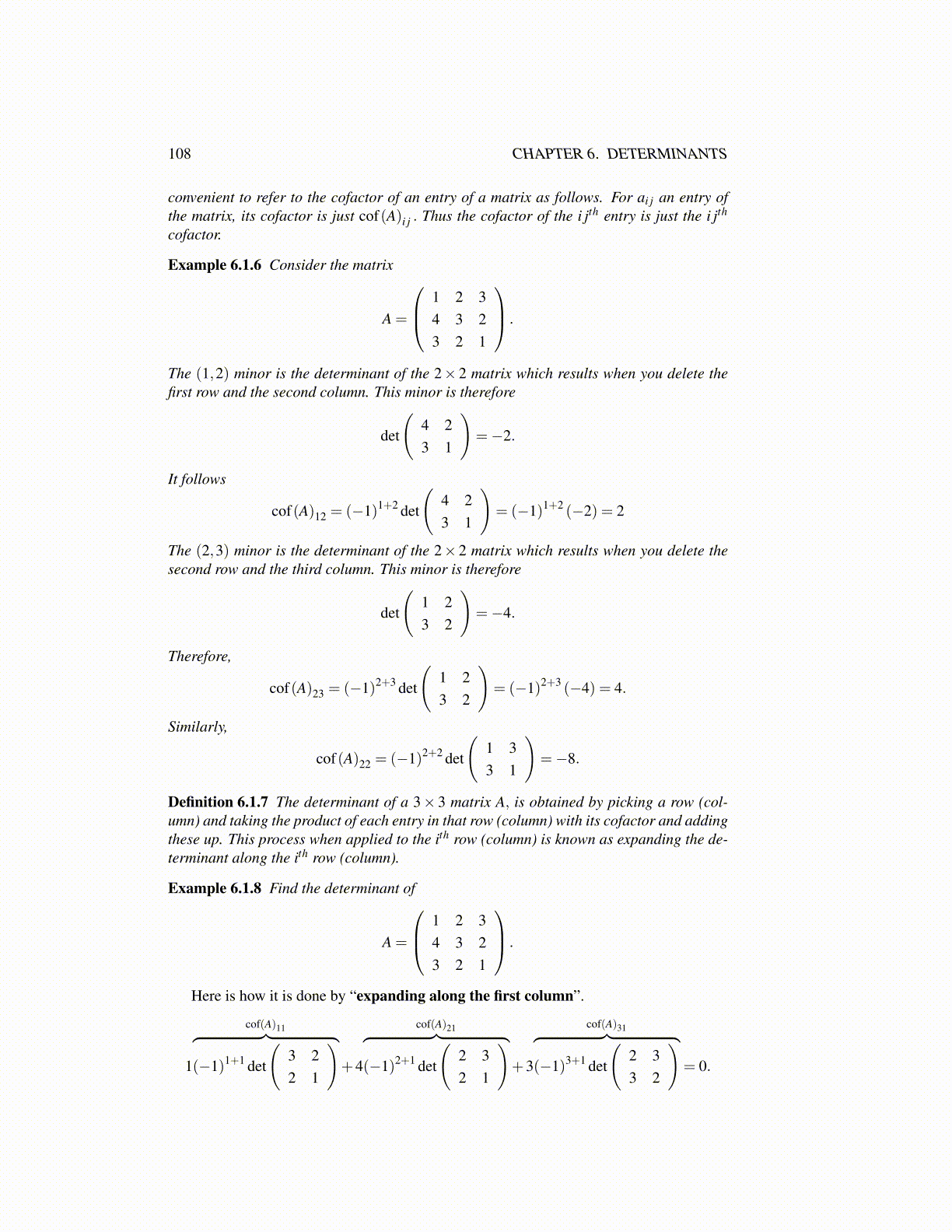
108 CHAPTER 6. DETERMINANTS
convenient to refer to the cofactor of an entry of a matrix as follows. For ai j an entry ofthe matrix, its cofactor is just cof(A)i j . Thus the cofactor of the i jth entry is just the i jth
cofactor.
Example 6.1.6 Consider the matrix
A =
1 2 34 3 23 2 1
.
The (1,2) minor is the determinant of the 2× 2 matrix which results when you delete thefirst row and the second column. This minor is therefore
det
(4 23 1
)=−2.
It follows
cof(A)12 = (−1)1+2 det
(4 23 1
)= (−1)1+2 (−2) = 2
The (2,3) minor is the determinant of the 2× 2 matrix which results when you delete thesecond row and the third column. This minor is therefore
det
(1 23 2
)=−4.
Therefore,
cof(A)23 = (−1)2+3 det
(1 23 2
)= (−1)2+3 (−4) = 4.
Similarly,
cof(A)22 = (−1)2+2 det
(1 33 1
)=−8.
Definition 6.1.7 The determinant of a 3× 3 matrix A, is obtained by picking a row (col-umn) and taking the product of each entry in that row (column) with its cofactor and addingthese up. This process when applied to the ith row (column) is known as expanding the de-terminant along the ith row (column).
Example 6.1.8 Find the determinant of
A =
1 2 34 3 23 2 1
.
Here is how it is done by “expanding along the first column”.
1
cof(A)11︷ ︸︸ ︷(−1)1+1 det
(3 22 1
)+4
cof(A)21︷ ︸︸ ︷(−1)2+1 det
(2 32 1
)+3
cof(A)31︷ ︸︸ ︷(−1)3+1 det
(2 33 2
)= 0.